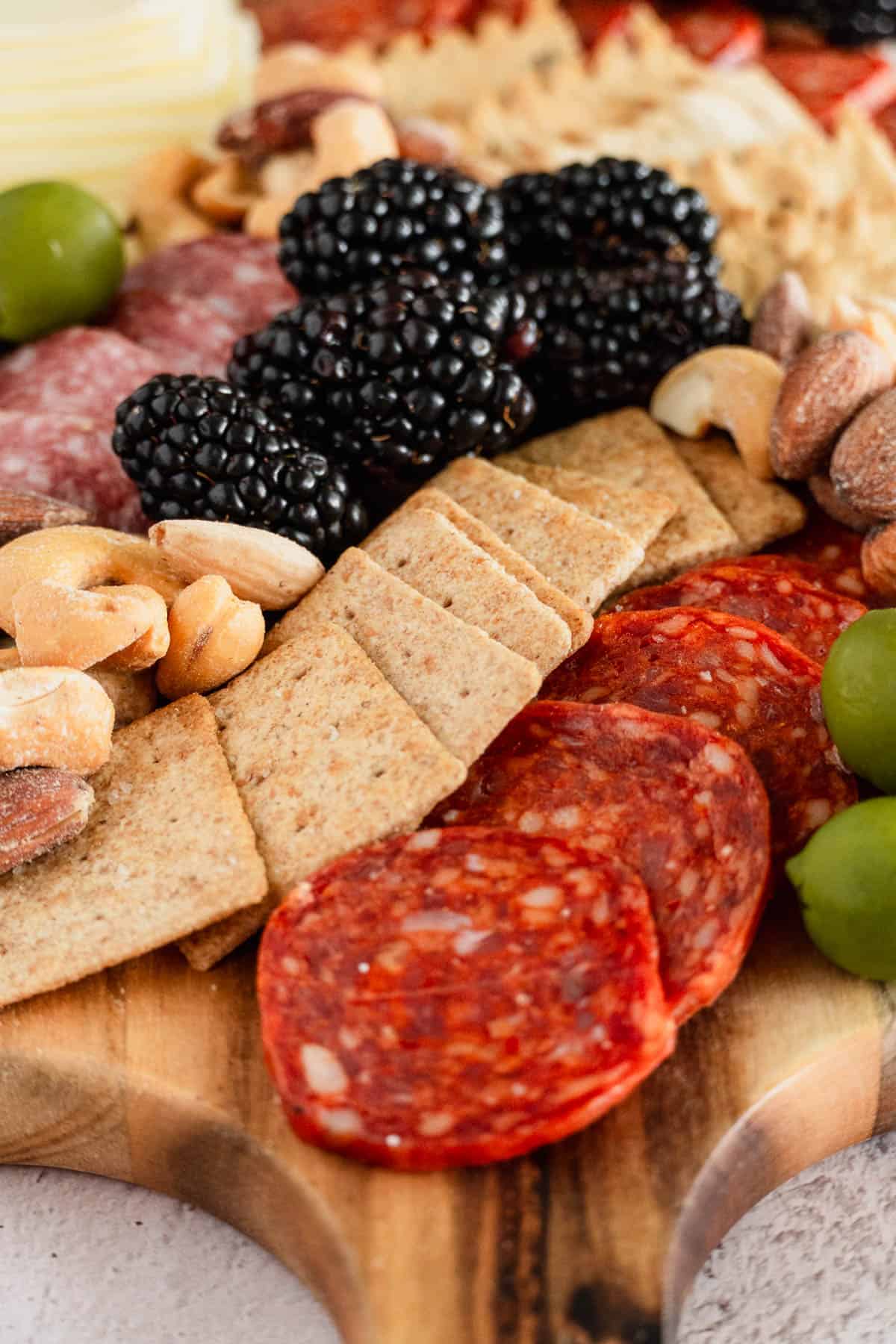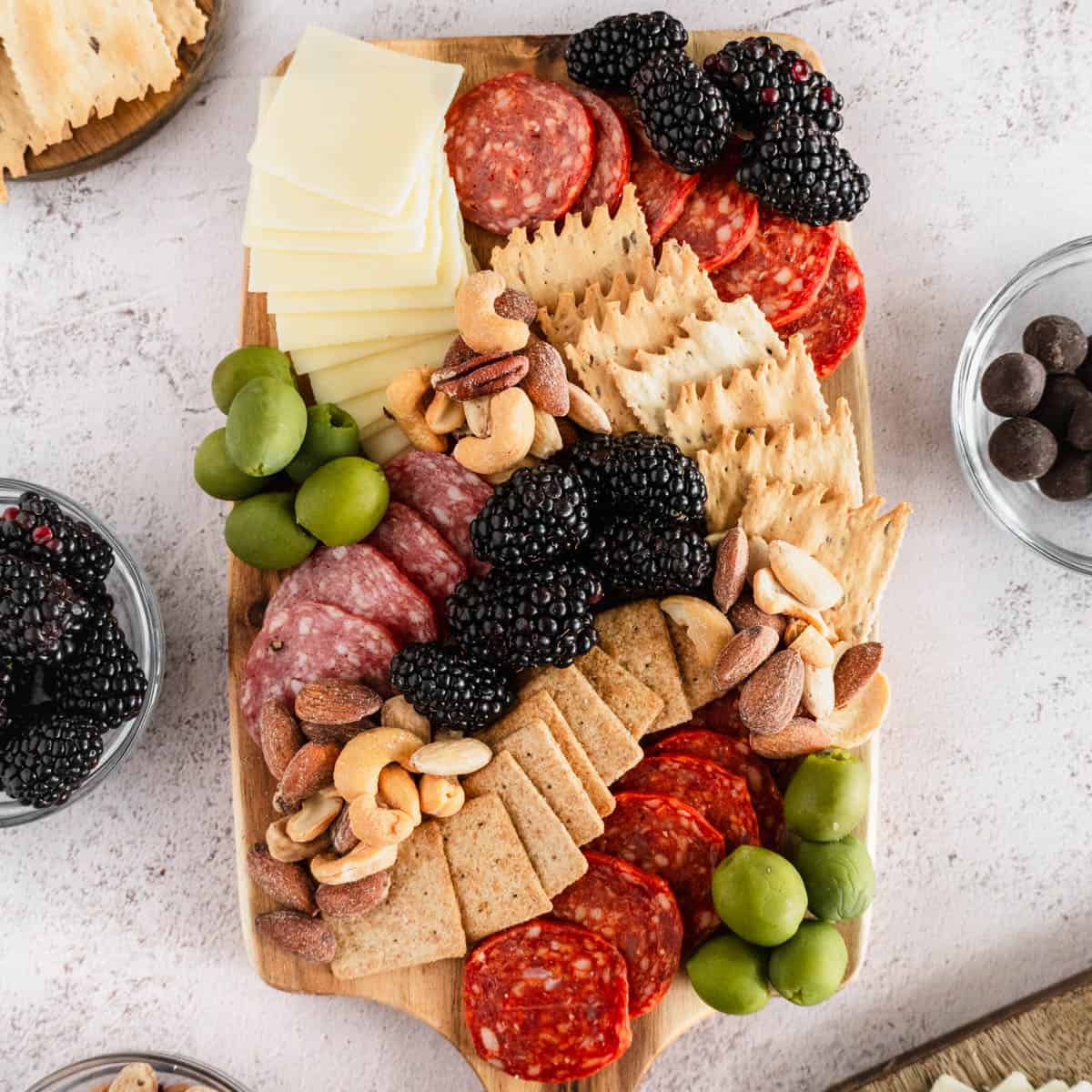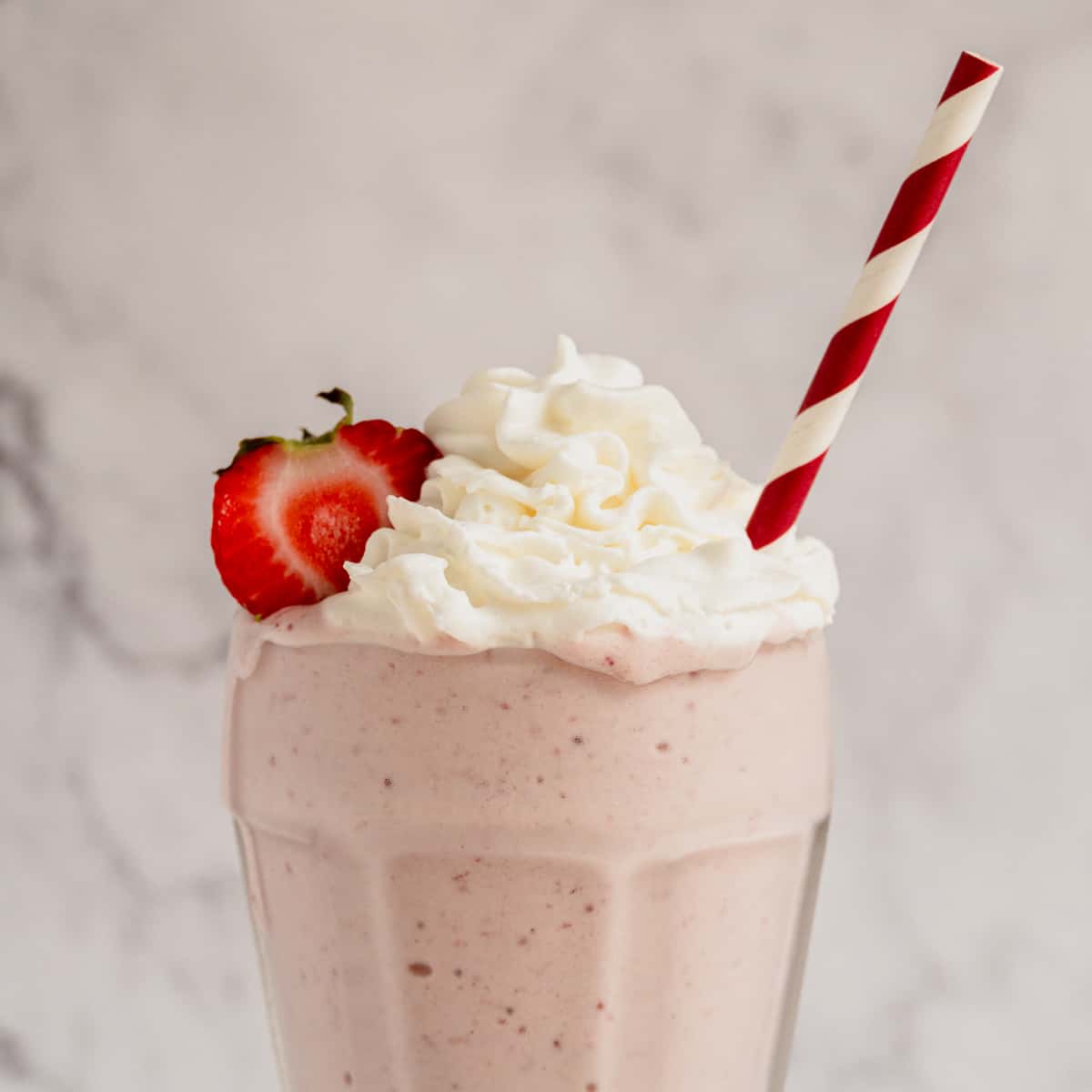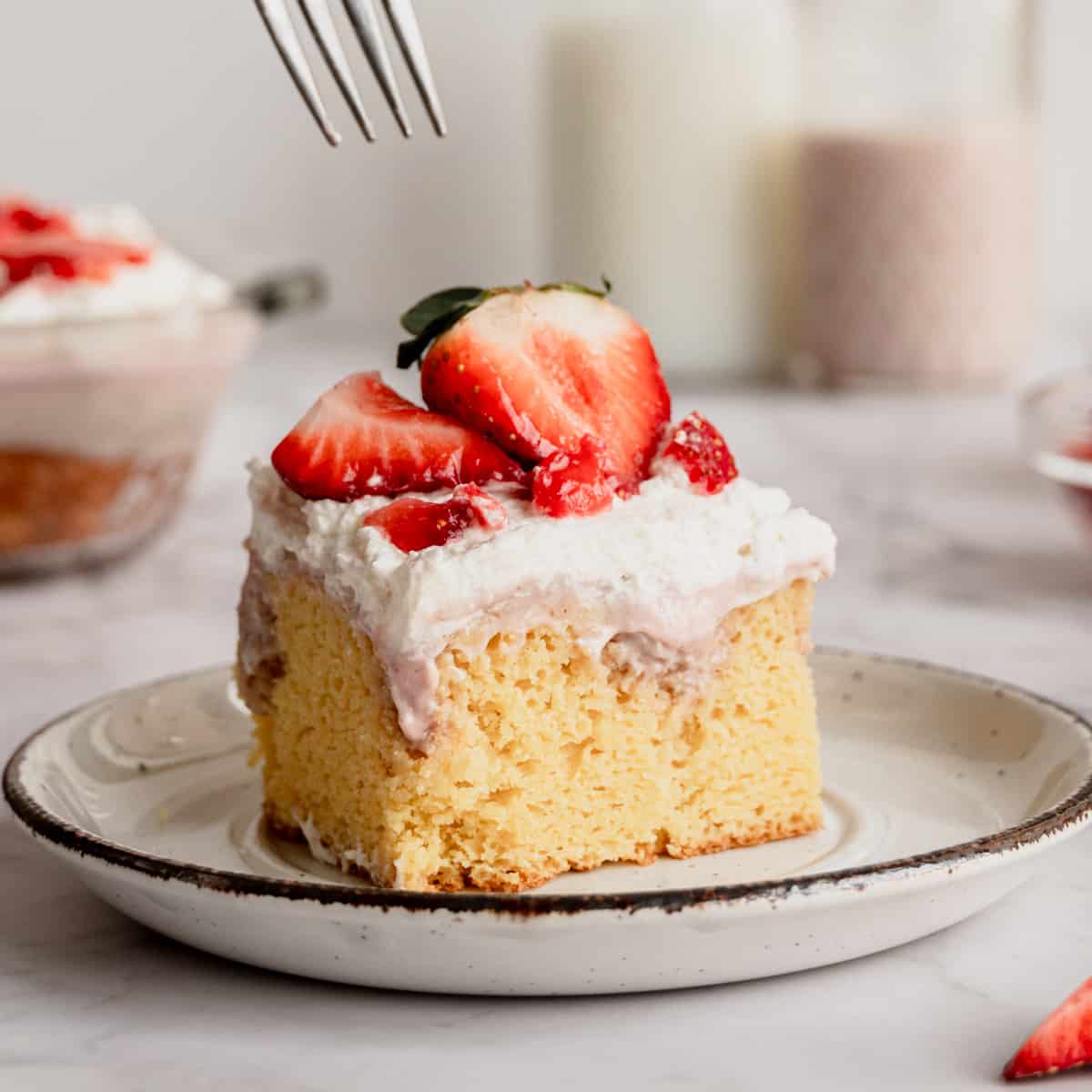Learn how to eat a charcuterie board with this easy guide to making the perfect food spread that everyone will enjoy!
You might also like How to Make a Breakfast Charcuterie Board, Fruit Platter/Summer Charcuterie Board , and 11 Simple Fruit Platter Presentation Ideas.

Jump To
Making A Perfect Charcuterie Board
One of the most popular food displays for parties and events is the beloved and iconic charcuterie board. This commonly entails spreads of fine cheeses and meats or rustic grazing tables with fruits, nuts, and jams. Whether you want a dinner-worthy charcuterie board or the perfect appetizer, charcuterie style dining is just the thing for your next party.
Though it might seem daunting, creating the perfect charcuterie experience can be made simple with just a few easy tips and tricks. In this post, we explain the ins and outs of selecting foods, tips for styling your platter, and how to eat a charcuterie board with ease.

What is a Charcuterie Board?
A charcuterie board is a communal food platter that originated in France. It features foods like cured meats, cheeses, fruits, vegetables, nuts, crackers, breads, and various sauces. The term charcuterie is a french word that basically means “cured meat”.
Nowadays, it seems like charcuterie boards are all the rage. However, charcuterie boards actually date back to at least the 15th century. In France, charcuterie was originally a method of preserving and eating meat.
Though charcuterie has French origins, there are many other cultures that have similar types of dishes and food arrangements. Modern charcuterie boards feature foods from various cultures and countries of origin.
What To Put On A Food Board
A classic charcuterie board usually includes items like cold meats, artisan cheeses, fruits, various nuts, crackers, and dips. However, the possibilities are endless when it comes to creating a food board. Here are a few ideas of what you might like to include when making a more classic charcuterie platter.
selection of meats
Including meat products on your board is a great way to create a more hearty and filling spread. Some of our favorite charcuterie meats include hard salami, pepperoni, prosciutto, summer sausage, and Virginia ham. Most dry-cured meat makes a great addition to any cheese and meat board.
variety of cheeses
Trying different cheeses is one of the funnest parts of creating the perfect cheese board. Including a mixture of both hard cheese and soft cheese not only enhances the culinary experience but also helps aesthetically.
Some of our favorite cheese options include brie cheese, smoked cheddar, gruyere, aged gouda, blue cheese, and goat cheese. If you’re looking for artisan cheeses or traditional french cheese, try visiting your local cheese shop! It’s a great way to find options for making an elegant cheese plate.


fresh fruit and dried fruit
With so many salty and savory counterparts, fruit brings an essential sweet element to complete any charcuterie platter. We like to include a mix of fresh fruit and dried fruit that pairs well with various cheeses and nuts.
Grapes, olives, and berries are some of our go-to fruits that pair very well with cheese. Stone fruits also make a great addition to any food board. These include things like cherries, apricots, plums, peaches, and nectarines.
crackers and nuts
While there are some crackers that are commonly found on food boards, we like to have fun with our unique cracker selections. For a more simple cracker, we like water crackers, butter crackers (like ritz), multigrain crackers, or even crostinis.
If you’re looking for something with a little more pizazz, flavored crackers can really add to your spread. Some of our favorites include pita crackers (mediterranean herb flavor), Triscuits (jalapeño or herb flavors are amazing), and mini pita or naan breads.
Nuts are a great element to include as well. We love using marcona almonds, pistachios, cashews, pecans, and peanuts.


sauces and dips
If you’re wondering how to eat a charcuterie board properly, it wouldn’t be complete without sauces and dips. The options are endless, but we especially love things like hummus, honey, jam or marmalade, spinach and artichoke, etc.
How To Eat A Charcuterie Board
Now that you know what goes on your charcuterie board, let’s talk about how to eat a charcuterie board. These tips and tricks will explain what foods are best eaten together, best serving techniques for guests, and what tools or utensils you might need.
Tips for serving
Refrigerated items: Fresh fruits, cheeses, and meats should be refrigerated until right before assembling the board. Your board should not sit out unrefrigerated for more than two hours.
Room temperature items: Crackers, nuts, dried fruit, honey, and anything else not stored in the fridge can be served at room temperature.
Meats: Thin slices of meat are easiest to serve on charcuterie boards. Bite sized items are best for guests to pick up and eat.
Utensils: Include toothpicks, mini skewers, or small tongs for guests to pick up items.
Sauces and dips: Place sauces and dips in small bowls with a spoon for scooping. Use honey dippers to drizzle honey.
Cheeses: Pre-cut any hard cheese into smaller pieces. Have small cheese knives near any soft cheese that’s not pre-cut.
Washing produce: Wash and dry fresh fruit or vegetables before serving.
Small plates: Have small plates available for guests to place food on.
Early preparation: You can prepare some charcuterie items beforehand like cutting cheeses and slicing fruits and veggies. Any refrigerated items should be put back in the fridge in airtight containers until assembly. This will prevent them from spoiling.
Assembly: For best results, final assembly of your food board should be right before serving. Some elements of the charcuterie board can be assembled beforehand or even the night before.
However, be sure to keep wet and dry elements separated until you’re assembling to serve. Crackers and breads can get soggy if left in the fridge overnight touching produce, meats, and cheeses.

Best Food Pairings
Cheeses: Brie cheese, goat cheese, blue cheese, and sharp aged cheese taste amazing drizzled with honey. Sharp aged cheese tastes great with sweet dried fruits like cherries, apricots, and cranberries.
Meats: Of course, salami and pepperoni pairs perfectly well with most semi soft and hard cheeses. Spicy meats are complemented by crackers, breads, and olives. Prosciutto tastes amazing when paired with sweet things like berries, soft cheeses, honey, and even jam.
Fruits & vegetables: Fruits like berries, grapes, and stone fruits have a sweet and tangy flavor that pairs well with cheese. If you choose to incorporate vegetables, these are perfect for eating with dips like hummus.
Crackers & nuts: Meat, cheese, and crackers are the holy trinity of charcuterie. You can’t go wrong with a crunchy cracker topped with cheddar, gouda, or gruyere and some salami. Spread soft cheese like brie or blueberry goat cheese onto a cracker and top with fruit, nuts, and prosciutto.
Fun Charcuterie Board Ideas
Though meat, cheese, and fruit boards are common, you can make a charcuterie board with any food you want! All you need is a large board, your favorite treats, and a little creativity. Here are a few charcuterie board ideas that are perfect for special occasions:
- Breakfast/brunch charcuterie board
- Dessert charcuterie board
- Fruit and veggie board
- S’mores charcuterie board
- Christmas themed food board
- Valentines/Galentines charcuterie platter










Leave A Reply